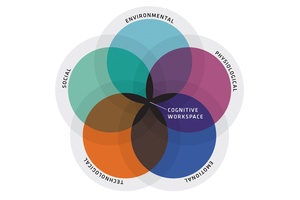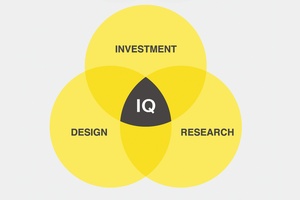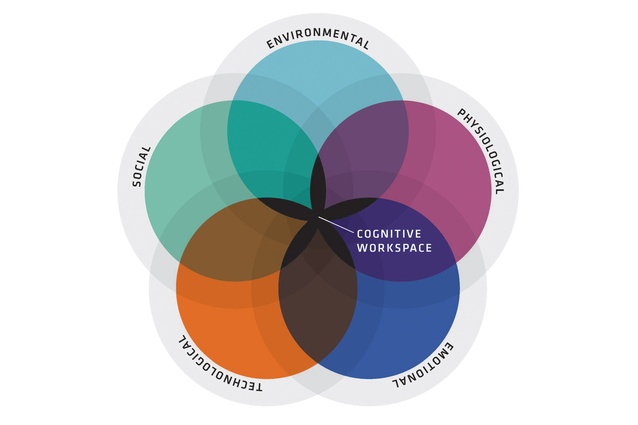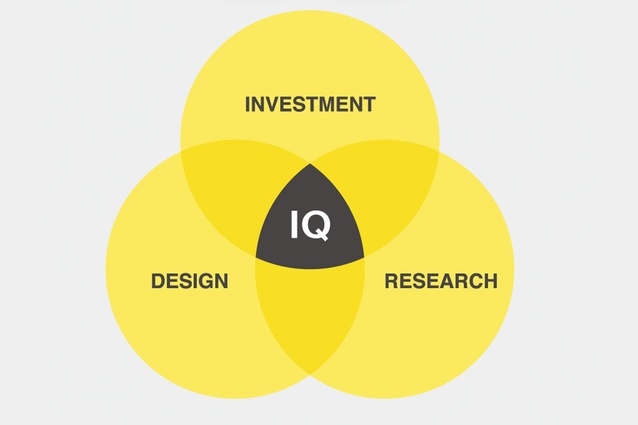Collaboration: The next buzzword?
“All right, stop. Collaborate and listen.” Vanilla Ice; Ice, Ice Baby .
Buzzwords, those terms that we love to hate, are everywhere. (If you have ever been asked to ‘add value’ or get involved in a ‘paradigm shift’ or told something will ‘go viral’, you’ll know what I mean.) In fact they’re now used so frequently that their greater meaning sometimes gets lost. The true meaning of the word is not the problem: it’s the way its bandied about and, consequently, watered down.
There’s potential for collaboration to become the latest buzzword used by architects, product designers, and furniture manufacturers. We all know collaboration has significant potential to change the way we think and act at work – and to diminish the importance of the word to the level of buzzword would be to do a disservice to all workers in the knowledge industry.

For the past two years, I have been fascinated with the potential collaboration has to change the world of interiors and workplace strategy. Others have also been fascinated with the word, if the number of times I have heard it spoken in recent times is any indicator. It’s everywhere, including at the recent Orgatec trade show in Cologne, Germany, which was full to the brim with new ideas on workplace strategy and collaborative furniture.
To stop collaboration becoming an oft used word whose meaning is lost, let me start by clarifying exactly what I think collaboration is all about. Or, rather, suggest what it is not. In a 2011 white paper 1 , Tim Springer highlighted the differences between communication, cooperation and collaboration. According to Springer, their definitions should be:
• Communication: “The exchange of information between two people.”
• Cooperation: “Doing what is asked. Working together. The division of labor among participants as an activity where each person is responsible for a portion of the problem.”
• Collaboration: “The process of shared creation: Two or more individuals with complementary skills interacting to create a shared understanding that none had previously possessed or could have come to on their own. Collaboration creates a shared meaning about a process, a product or an event.”
To understand collaboration a little better, it is helpful to reflect on why it is increasingly important and how it can change the way we work.
Business has experienced a fundamental change in the demographics of leadership in recent times. Business leaders are no longer the exclusive domain of executives born in an era of World Wars or the Cold War. Those leaders, through their industrialised/militarised approach to business, adopted a command and control structure. They were the ‘C-suite’: CEO, CFO and sometimes a COO. Decisions, value creation and strategy were the domain of the Big Cs. Their mandates were delivered from upon high to the people below, whose role was to implement their orders. The executive’s role was to communicate and the workers to cooperate.

Scottish philosopher Adam Smith’s 18th century economic theory 2 around division of labour was adopted by the C-suite and thrives today – for good reason. Smith studied a pin factory and discovered that by allowing individuals to specialise in each of the stages in pin manufacture the company grew daily production from hundreds of units per day to tens of thousands. Specialisation harnessed the potential productivity of generalists. The division of tasks required greater communication and cooperation to achieve results.
Division of labour is still alive and well in contemporary society. Modern C-suites can feature a raft of Cs, including CTO (technology), CIO (information) CDO (diversity) and on and on. And Smith’s study of a business during the Industrial Age is applicable to today’s knowledge-based economy. Fundamentally, we still have the specialists who excel in defined areas and who require communication and cooperation to achieve effectiveness. The greater opportunity though, is for a collaborative effort of two or more parties whose combined output could be greater than the sum of the individual participants.
Today, as a result of increased specialisation in skills, a multi-generational work force, social influences and the technology to support them, business value-creation is typically more organic and a function of multiple disciplines pollinating their abilities into product (or service) whose sum is greater than the parts.
Today, of the average 10 tasks or projects on your desk right now, 8 or 9 of them will require you to interact, communicate, cooperate and collaborate to execute them to their fullest potential. The growth of knowledge is also extraordinary. Depending upon who you ask, the growth of knowledge and those who earn a living from it is doubling every 1.5 to 5 years. This kind of economic growth and potential for collaboration acts as a multiplier on the benefits that society and companies can achieve from the process.
The opportunity must surely be to have the world of commercial interiors collaborate in a way that allows us to harvest this potential. Architects, spatial and interior design teams, as well as furnishing teams, can and should work together, consider the complex influences on and potential of modern workplaces. The result has to be greater than what they could achieve independently.
This fundamental paradigm shift is a real value-creation opportunity that should go viral if the right intellectual capital can be harnessed and the correct niche identified. (Forgive me. I had to see how many buzzwords I could fit into one sentence.) In other words, the true potential for collaboration exists for those who can see past its buzzword status and embrace its potential to fundamentally impact in the way we work.
Footnotes:
1. Measuring Work and Work Performance, Tim Springer, PhD, February 2011, New Ways of Working LLC..
2. Smith, Adam. Wealth of Nations, edited by C. J. Bullock. Vol. X. The Harvard Classics. New York: P.F. Collier & Son, 1909–14













